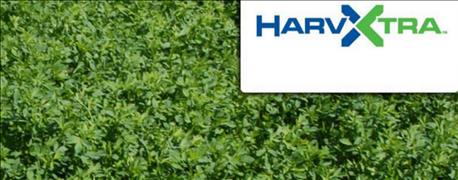
You may not have heard much about reduced lignin alfalfa yet. But you soon will.
"You are going to hear a lot more about this in the next five to 10 years," Kansas State University agronomist Doo-Hong Min told producers attending a Feb. 23 Grasslands and Forage Conference in Garden City.
Reduced lignin alfalfa is so new that there are no published research papers yet. But scientists have known for years that lignin is not digestible by ruminant animals and can interfere with nutrition. In regular alfalfa, lignin accounts for 3 to 12% of dry matter and it increases with tissue age, especially after bloom.

NEW ALFALFA: HarvXtra alfalfa is genetically modified to reduce the plant's creation of lignin.
For three decades plant breeders have been using conventional alfalfa breeding techniques to select for improved forage quality. Cultivars selected include the W-L HQ series, Croplan brand LegenDairy and more recently the Q series from Pioneer and NexGrow and Hi-Gest alfalfa from Alforex.
All those offer incremental improvement in lignin reduction.
Now there is HarvXtra from Forage Genetics, a bio-engineered variety created by using gene suppression to change the process that alfalfa plants use to make lignin. This process change alters both lignin content and lignin composition. Partners with Forage Genetics in the project that developed HarvXtra include the Samuel Roberts Nobel Foundation, the U.S. Dairy Forage Research Center and Pioneer, in conjunction with Monsanto.
HarvExtra will be stacked with the Roundup Ready technology, which enables growers to apply Roundup to control weeds up to five days before cutting.
The breakthrough in technology has Tom Clayman, co-owner of Kaufmann Seeds at Haven, excited about the prospects for the new crop.
"The great thing about HarvXtra is that it doesn't lose quality with maturity," Clayman said. "Regular alfalfa has to be cut right at early bloom stage for the best quality. If you wait until full bloom, you lose quality because the plant replace cellulose with lignin as it matures."
With HarvXtra, however, that does not happen. It remains palatable and retains high quality for 7 to10 days after bloom. That means instead of having to cut on a 28-day schedule you can cut on a 35 to 38-day schedule.
That means a producer can go for four cutting per season instead of five, saving the labor, fuel and time invested in the crop. Waiting longer also means a gain in tonnage for the crop.
It also provides a wider harvest window for farmers.
"So often, you have a weather issue that delays cutting past the optimum date," Clayman said. "With regular alfalfa if you get a delay, you lose a lot of quality With HarvXtra you don't lose anything by waiting to cut."
While farmers today export very little hay or other forages, Clayman says he sees that changing over the next decade.
"I think we will see an increase in demand for forages from other countries like Japan and Korea where they available land for growing forages is limited, but where consumer demand for dairy products and met are growing."
He said the dairy and beef industry in Kansas can survive by bringing in unit trains of corn from Iowa, allowing farmers to grow forage crops instead of corn,
Forage Genetics HarvExtra looks the same in the field and in the bale as regular alfalfa. The difference comes when you do a feed quality test, Clayman said.
Limited amounts of seed will be available to growers who wish to plant HarvXtra this spring.
About the Author(s)
You May Also Like






